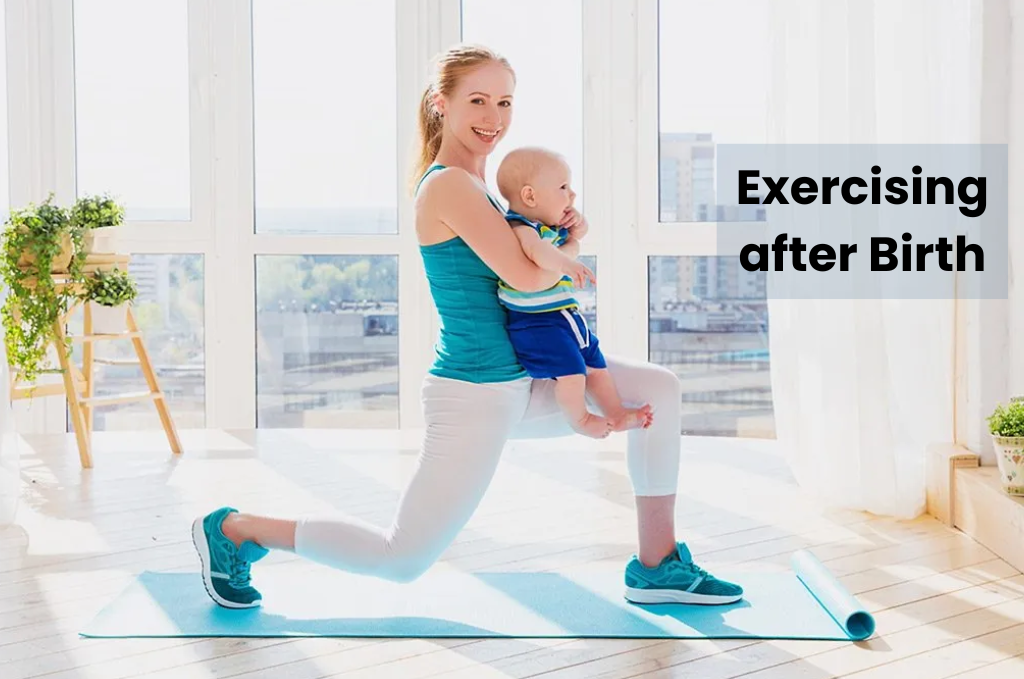Hello people! How do I get back into shape and regain my strength? new moms! Well done for the newborn. The postpartum period is a happy time but also a healing time that the woman and the whole family have to get used to. Often, the specials a mother-to-be wants to know are, Diet postpartum is about slimming down and getting your energy, strength, and self-confidence back.
This guide looks at the various workouts that mothers should embark on postpartum and crucial facts that will help them make fitness a reality. Let us get to the business of the day, which is steps to a stronger you.
Let’s dive in!
Table of Contents
Exercising after Birth

The first forty weeks after childbirth is referred to as the fourth trimester and it is crucial for a mother. By this time you understand that your body has undergone drastic changes during pregnancy and childbirth. Here’s why postpartum fitness should be part of your recovery plan:
- Restores Strength: Pregnancy tends to weaken these muscles, especially the core and pelvic floor muscles. Exercise therapy to increase their functionality is helpful for them.
- Boosts Mood: Research suggests that exercise causes the release of endorphins that reduce postpartum depression by 40% among new mothers.
- Improves Energy: Regular physical activity also helps develop muscles and fight fatigue, which is necessary for a baby.
Supports Healing: Any little movement battles with blood and helps heal.
Childbirth is Allowed to Begin Exercising
If you are considering getting into any fitness regime, you should seek advice from your physician. The general guidelines are:
- Expected Vaginal Delivery: Thereafter exercising can often start within 4-6 weeks after birth.
- C-Section: It is recommended that the exercise should not commence within the initial 6-8 weeks because of the time taken by the wound to heal.
This will involve checking that you no longer feel pain during intercourse, that you hardly bleed, and that you feel stronger.
Postpartum Strength Routines Rebuild
Here are some beginner-friendly exercises to kickstart your fitness journey:
Kegel exercises or Pelvic floor muscle exercises
- Purpose: Toned up pelvic muscles hence less incidences of incontinence.
- How to: Sit comfortably with your feet flat on the ground, clenching the muscles that help prevent urination. Wait for 5 seconds, and then stop applying pressure. Repeat 10 times.
- Frequency: 3 sets daily.
Abdominal Breathing
- Purpose: Strengthen primal muscles and correct posture.
- How to: Sit or lie down. Take a breath, filling your lungs and tummy with air. Breathe out gently, drawing your navel towards the concave position of the spine.
- Frequency: 10–15 reps twice daily.
Glute Bridges
- Purpose: Strengthen the muscles of the buttocks, thighs, and lower back.
- How To: If one is starting, place the knees on the sitting area of the bench and feet flat on the bench’s surface while lying on the bench with one’s back on the floor. Knees bend and lift the hip in a way that makes you feel a stretch at the top, then hold the position and get down to the starting position.
- Frequency: 12–15 reps, three sets.
Walking
- Purpose: Use it to increase cardiovascular capacity and functionality.
- How To: Start with an easily manageable 10-15 minutes and then try to increase the speed slowly.
- Frequency: As often as possible – daily.
Modified Planks
- Purpose: Improve your base muscle groups and the upper extremities.
- How to: Begin on your hands and knees, like the cat-bounce starting position. This hold should usually take 10 to 20 seconds.
- Frequency: 3–5 reps.
How to Exercise in the Postpartum Period
Prioritize Rest
Your body needs time to heal. Add onto the exercise the right amount of Rest to avoid the exercise boredom syndrome.
Stay Consistent, Not Intense
Consistency is key. It’s not necessary to set hours for exercise; a simple 10-minute exercise can do wonders if done daily.
Include Your Baby
- Ensure that you use your baby as the weight for your squatting.
- Go for walks with a stroller.
- Do simple yoga exercises with the baby right beside you.
Focus on Nutrition
All the body’s nutrition requirements for the whole day have to be taken in the evening to address all the muscular requirements for fixing, development, and building of tissues. Focus on:
- Protein foods (meats, lean meats, eggs, beans”) for muscle repair and tissue growth.
- Calcium supports bones and is found in dairy products and leafy greens.
- Omega-3s (salmon, walnuts) for mood/brain.
Puerperal Issues & Solutions
Lack of Time
- Solution: Split exercises into as many sets as possible. Suggest 10-minute exercises while the baby is asleep.
Exhaustion
- Solution: Such simple exercises include bending or flexing muscles, stretching the body, or taking a walk. However, gradually build up your stamina when you increase the volume of your exercise sessions.
Fear of Injury
- Solution: Avoid lifting heavy weights and avoid active and strenuous exercises. Do not take part in strenuous activities or lifting, and avoid vigorous exercises in the first instance.
Postpartum Fitness Trends
The fitness industry has awakened to new mothers’ needs and provided programs and equipment for baby-friendly exercising. Some trending options include:
Postpartum Yoga and Pilates
These include flexing, toning the tummy muscles, and relaxing the mind. Search for courses or applications for mothers-to-be or moms with young children.
Wearable Tech
Fitness trackers track your physical activity and assist in angering you.
Virtual Personal Training
Today you can see many fitness professionals who conduct online sessions for new moms.
The following video explain about: Postpartum Fitness Trends
Support Framework in Fitness After Birth
In this essay, the author focuses on recovering one’s strength after childbirth as a physical and psychological process. Surround yourself with supportive people, such as:
- Partner/Family: Make them continue supporting you with childcare when you are exercising.
- Mom Groups: Participate in some groups offline or online to share progress and be encouraged.
- Fitness Communities: The trainers and many gyms exist that offer postpartum programs.
Motivate Your Exercise Regimen

- Exercise and Mental Health: The CDC also has facts indicating that physical exercise can increase anxiety and depression by 30%.
- Postpartum Recovery: A study in 2023 showed that, on average, women who perform low-impact exercise had 25% of their healing time cut.
- Core Strength Gains: Moms who did daily exercises for their belly muscles, especially those who had just delivered a baby, managed to regain 60% of their pre-pregnancy tone within six months.
When to Look for Assistance
Sometimes, more is needed to make fitness a do-it-yourself project. Consult a professional if you experience:
- Chronic pain while exercising.
- What causes diastasis recti or abdominal muscle separation, and what ways to fix it?
- Moving with a lot of strain and stiffness and giving up easily while exercising.
- You should make an appointment with a physical therapist or a qualified postpartum fitness specialist to design safe programs.
Conclusion
With helpful tips for new moms, there is no reason to worry about failing when trying to regain strength after delivery. Easy postpartum exercise and taking care of herself will go a long way toward assisting her in rebuilding her body and confidence.
I am always happy to remind my readers that fitness is not a destination but a process. Take baby steps, keep up the pace, and pop a bottle of champagne whenever you can. It is now time to start your postpartum fitness journey—what should you do today?
FAQs
1.Is weight loss possible on a postpartum diet and fitness regime?
Yes, but it’s more about gaining strength and energy in a second or a minute. Walking is a good form of exercise, along with proper dieting, to obtain lasting results.
2.Does postpartum fitness involve online programs?
Yes, some applications and sites are available for new mothers to find yoga, Pilates, and even strength training.
3.What do people think will help them find the motivation?
Adopt achievable objectives, establish your development evaluation, and incorporate your baby into your routines. It is recommended that you find a mom community for additional backup.
4.Is it safe for moms to do postpartum workouts while breastfeeding?
It is safe to exercise after delivery while breastfeeding. They recommended that one drink lots of water to keep one’s energy and breast milk production constant and eat nutritious foods.
5.Taking quite a long period is needed to regain that pre-pregnancy strength?
It’s different for everyone. Sustained efforts reveal that the majority of mothers experience drastic enhancements in strength and fitness beginning 6-12 months after delivery.



